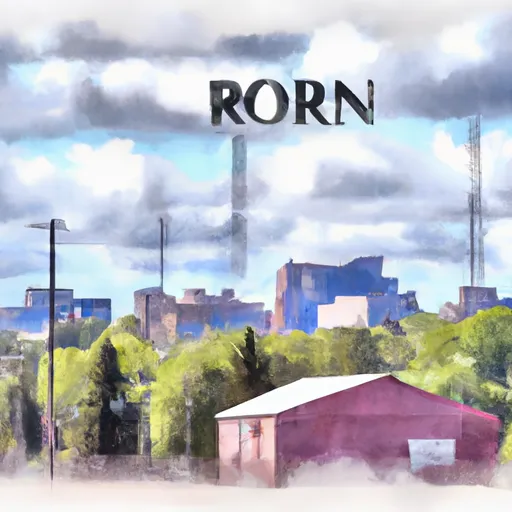-
 Snoflo Premium
Snoflo Premium
Get unlimited access to all our content
With no Ad interruptions! - Start Your Free Trial Login with existing account
Iron
Eden Index
Climate
4.8
•
Recreation
4.0
•
Community
•
Safeguard
3.3/10

Iron, Minnesota is a small town located in St. Louis County, in the northeastern part of the state. The climate in Iron is classified as humid continental, characterized by warm summers and cold winters. Average temperatures range from 20°F (-6°C) in winter to 75°F (24°C) in summer. The area is known for its heavy snowfall, creating ideal conditions for winter sports like skiing and snowmobiling.
Hydrology constitutes a significant aspect of Iron's landscape, with several lakes and rivers dotting the region. Lake Vermilion, located nearby, is a popular destination for fishing, boating, and swimming. The area is also home to the Iron Range, a geological formation rich in iron ore deposits, which has played a vital role in the town's history.
Iron offers a plethora of outdoor recreation opportunities. In addition to winter sports, visitors can enjoy hiking, biking, and camping during the milder seasons. The Superior National Forest, located in close proximity to Iron, offers extensive trails for exploration. The town's natural surroundings make it an excellent destination for nature enthusiasts seeking tranquility and outdoor adventures.
What is the Eden Index?
The Snoflo Eden Index serves as a comprehensive rating system for regions, evaluating their desirability through a holistic assessment of climate health, outdoor recreation opportunities, and natural disaster risk, acknowledging the profound impact of these factors on livability and well-being.
Climate Health Indicator (CHI): 4.8
Iron receives approximately
695mm of rain per year,
with humidity levels near 83%
and air temperatures averaging around
4°C.
Iron has a plant hardyness factor of
3, meaning
plants and agriculture in this region thrive during a short period during spring and early summer. Most
plants will die off during the colder winter months.
By considering the ideal temperature range, reliable water supplies, clean air, and stable seasonal rain or snowpacks, the Climate Health Indicator (CHI) underscores the significance of a healthy climate as the foundation for quality living.
A healthy climate is paramount for ensuring a high quality of life and livability in a region, fostering both physical well-being and environmental harmony. This can be characterized by ideal temperatures, reliable access to water supplies, clean air, and consistent seasonal rain or snowpacks.
Weather Forecast
Streamflow Conditions
St. Louis
Area Rivers
St. Louis
Snowpack Depths
St. Louis
Reservoir Storage Capacity
St. Louis
Groundwater Levels
Recreational Opportunity Index (ROI): 4.0
The Recreational Opportunity Index (ROI) recognizes the value of outdoor recreational options, such as parks, hiking trails, camping sites, and fishing spots, while acknowledging that climate plays a pivotal role in ensuring the comfort and consistency of these experiences.
Access to outdoor recreational opportunities, encompassing activities such as parks, hiking, camping, and fishing, is crucial for overall well-being, and the climate plays a pivotal role in enabling and enhancing these experiences, ensuring that individuals can engage in nature-based activities comfortably and consistently.
Camping Areas
| Campground | Campsites | Reservations | Toilets | Showers | Elevation |
|---|---|---|---|---|---|
| Anderson - Berger Park | None | 1,143 ft | |||
| Stubler Beach | 8 | 1,511 ft | |||
| Garfvert - Nemadji State Forest | 18 | 1,162 ft | |||
| Echo Lake | 24 | 1,275 ft | |||
| Aaron Provincial Park | 98 | 1,246 ft | |||
| Barnum City Park | 12 | 1,089 ft | |||
| Moose Lake City Park | 82 | 1,053 ft | |||
| Willow River - Gen Andrews State Forest | 38 | 1,048 ft | |||
| Buhl RV Park | 10 | 1,521 ft | |||
| Moose Lake State Park | 35 | 1,115 ft |
Nearby Ski Areas
Catastrophe Safeguard Index (CSI):
The Catastrophe Safeguard Index (CSI) recognizes that natural disaster risk, encompassing floods, fires, hurricanes, and tornadoes, can drastically affect safety and the overall appeal of an area.
The level of natural disaster risk in a region significantly affects safety and the overall livability, with climate change amplifying these risks by potentially increasing the frequency and intensity of events like floods, fires, hurricanes, and tornadoes, thereby posing substantial challenges to community resilience and well-being.
Community Resilience Indicator (CRI):
The Community Resilience Indicator (CRI) recognizes that education, healthcare, and socioeconomics are crucial to the well-being of a region. The CRI acknowledges the profound impact of these elements on residents' overall quality of life. By evaluating educational resources, healthcare accessibility, and economic inclusivity, the index captures the essential aspects that contribute to a thriving community, fostering resident satisfaction, equity, and social cohesion.

